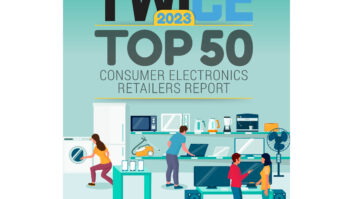While “holiday selling season” might suffice as a blanket description for the laymen, consumer electronics retailers have been forced to refine the season into a number of discrete phases, each with peaks and valleys that better describe the frenetic year’s end.
According to leading retailers assembled at CES for TWICE’s annual retail roundtable, moderated by senior editor Alan Wolf, a successful “Black Friday” was followed by grim days where sales fell “disappointingly” short of expectations only to witness another upsurge in buying that carried well past Christmas and into the new year.
“By Dec. 15th I was out in the parking lot with a razor blade,” said Bill Parker, president/GM Gateway retail stores. “Consumers have gotten a lot better at waiting us out, waiting for the deals and waiting for us to blink.”
“The first two weeks of December were rough,” admitted John Schlenner, DMM, Sears. “But since the 15th, sales have been strong.”
Product shortages, particularly in DLP televisions and other hot-selling items, put a crimp on holiday sales, while gift cards — which are now being redeemed in force —propped up the final weeks and buoyed post-Christmas sales.
Ron Baime, senior VP, Circuit City, echoing his boss, CEO Alan McCollough, said that his store sought to compensate for DLP shortages by pushing rival technology.
“All the products are so good that if DLP isn’t in stock, the consumer can be sold on other sets,” Baime said.
“I think there was a missed opportunity due to the shortages,” said Schlenner.
Retailers enumerated the myriad challenges they’re confronted with, from increasingly commoditized products that are steadily eating into margins, ever-sophisticated technology that requires more consumer and sales associate education, to convergent technologies that blur the line between consumer electronics and IT equipment and between CE and computer retailers.
“It’s a relentless market, so we have to be able to move our brand to different places and better react to, and understand, individual customer needs,” said Mike Linton, executive VP/chief marketing officer, Best Buy.
Toward the first challenge, Amazon.com’s VP of consumer electronics, Frank Sadowski, said that better supply chain management and back-end cost management can offset low priced products flooding the market from Asia.
“Lower prices are a good thing from a consumer perspective and they can stimulate markets,” Sadowksi said. Rather than bemoan tightening margins, Sadowski suggested lifting a page from the computer-direct sellers, who succeeded in part because they “became more efficient on the supply-chain end.”
Andy Berman, VP, new business development, RadioShack, said his chain’s focus is on better harmonizing the e-tail site with the 7,000-plus retail outlets to better manage the supply chain, while simultaneously identifying “disruptive technologies” that will drive customers to stores. Berman pointed to home networking as an example of a disruptive technology that will require intense hand-holding and thus play to RadioShack’s strength of in-store education.
“We’re in the final stage of the convergence between the CE and the IT market, and you have to sell the entire package,” said Noah Herschman, VP, strategic business development, Tweeter. “We’re taking a long, hard look at our suppliers — for the first time in over 20 years — to see who is evolving fast enough.”
Larry Mondry, CEO, CompUSA said, “We don’t look at ourselves as a CE dealer but the reality is the products are merging, Just look at the PDA — is that a CE or an IT product?”
The greatest challenge facing retailers in an increasingly convergent technology market is better identifying customer wants, educating customers, and playing up store strengths, Mondry said.
“We’ve always had a very strong service department, but we’ve never really played up that strength to the public and now we’re making a conscious effort to let customers know we can come into their home and set up this technology,” Mondry said.
Gateway’s Parker addressed his company’s eyebrow raising pricing, claiming that in fact the “disruptive” pricing strategy was confined to a few categories.
“We can’t be so disruptive that we can no longer promote,” Parker said. The bigger challenge, Parker said, is adjusting to the shorter product life cycles and quickly turning stale inventory to cash.
“Things become a commodity so fast that we have to focus on giving the customer a great experience, because they’re only in our stores between two and four times a year,” said Neil Bobrick, senior sales VP, Ultimate Electronics.
An edited transcript of the TWICE Retail Roundtable will be published in the Feb. 23 issue of TWICE.












